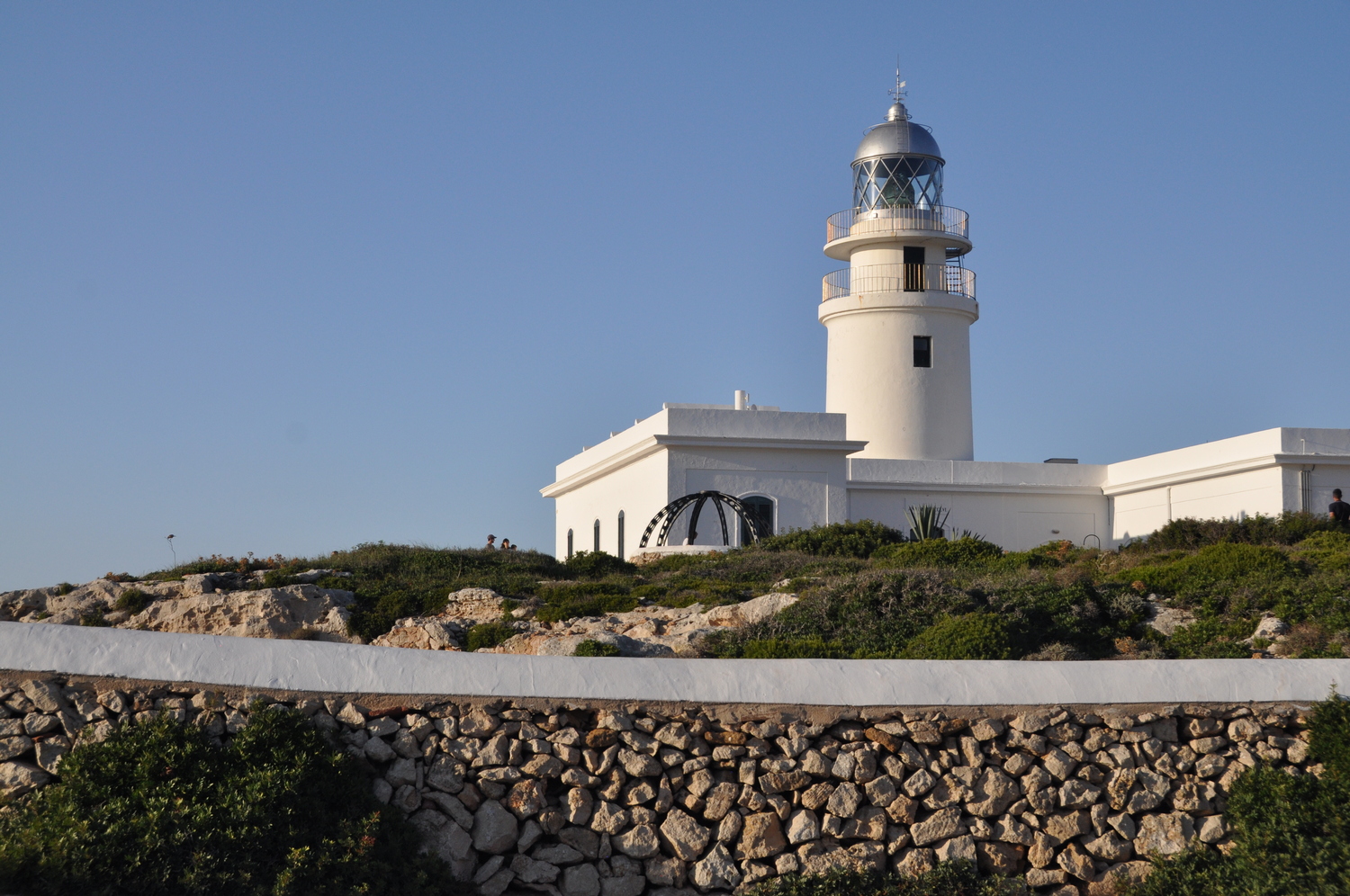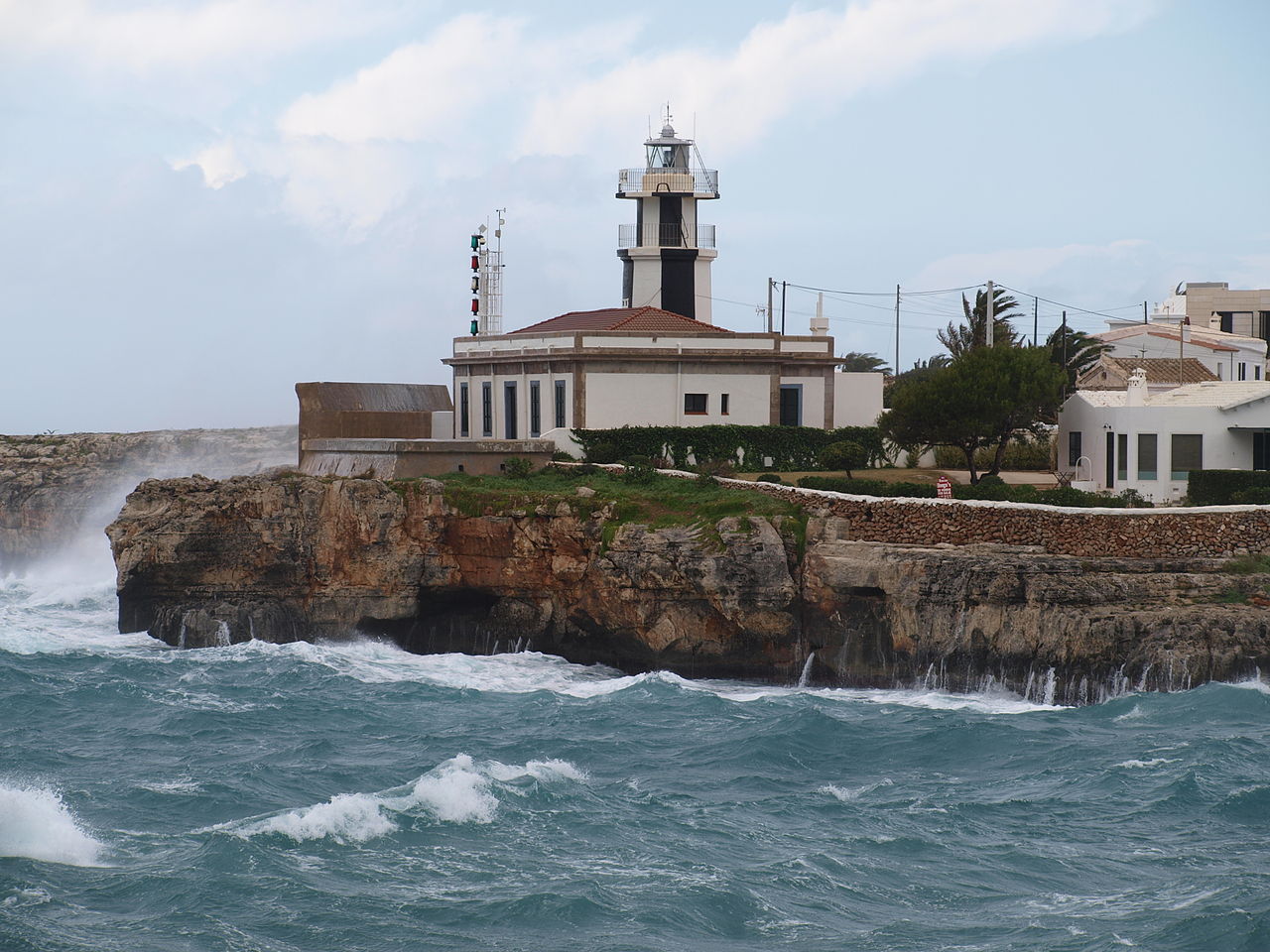Favàritx, Cavalleria, Punta Nati, Artrutx and Illa de l’Aire are the five vertices of the imaginary pentagon that Menorca draws on the map. Each one of their lighthouses has alerted sailors and guided seamen for a century and a half. Today they are the most iconic landmarks of Camí de Cavalls 360º and they star in some of the island’s essential photographs. Located in the middle of charming landscapes, their slender figures house stories and anecdotes.
Menorca has great potential for thematic tourism lovers. Wonderful coves and beaches, well-preserved archaeological sites, examples of crafts and living culture, defensive and watchtowers, surprising and varied geological formations… and lighthouses. Whether walking or biking, Menorca lighthouses are part of the storyline of Camí de Cavalls 360º.
Far de Favàritx
The rugged and harsh environment of Cap de Favàritx is home to this lighthouse, which marks the north-eastern limit of the island. It was built between 1917 and 1922 to complete the lighting of the north coast as a complement to the Cavalleria and Punta Nati lighthouses. Its 28 meter high tower was the first entirely made of concrete in the Balearic Islands. Painted in white with a helical black band, it contrasts with the surrounding landscape of black rocks and an almost lunar appearance. It is located within the territory of the Parc Natural de S’Albufera des Grau. From the Camí de Cavalls, you can reach it by following the Favàritx road for about 850 meters.

Far de Cavalleria
The north coast of Menorca had suffered more than 700 shipwrecks since the 14th century before this lighthouse was built, on the northernmost tip of the island, in 1857. The dangers were not eliminated and shipwrecks were not completely avoided, but it was the beginning of the solution. Its modest, fifteen-meter-high white tower rises almost one hundred meters above sea level thanks to its strategic location, on a prominent cliff.
The venue, which includes an interpretation center, is open to the public from May to October. The Camí de Cavalls does not pass through the tip of Cap de Cavalleria. To get there you have to travel about 2.6 kilometers by road from the area of Port de Sanitja and the Roman city of Sanicera.

Farola de Punta Nati
If the Far de Favàritx area evokes a lunar landscape, the surroundings of the Farola de Punta Nati transports one to a desolate Martian landscape. This grim and inhuman territory of the Menorca seca (dry Menorca), dominated by the wildest versions of rock, wind and water, has a special beauty. In this area, the hand of man can only be seen in the dry stone of the walls and the occasional huts, as well as in the enclosure of this lighthouse built on the edge of a cliff.
The hexagonal tower of the Farola de Punta Nati is nineteen meters high and built using masonry techniques. Its origins are closely related to the tragic shipwreck of the French steamer Général Chanzy, which crashed against this coast in 1910, causing 156 deaths and a sole survivor. The French government pushed for the rapid construction of this lighthouse, which was operational as early as 1913. It is well visible from the Camí de Cavalls, which crosses its access road only 600 meters away.

Farola d’Artrutx
The Camí de Cavalls walks by this lighthouse, which sits on the southwestern tip of the island. It is located in an urban environment, in a spot gained to the sharp gray stones so frequent in this part of Menorca. They completely surround its enclosure, where there is a restaurant. Its terrace invites you to enjoy the evening, sheltered by its 34 meter high tower painted in black and white stripes.
Originally, the tower was half as high when it was built in 1859. It used to suffer from tremors due to a nearby underwater cave, which even caused some broken glass. Its height was doubled in a reform and modernization carried out 110 years later, in 1969. To reinforce its consistency, the characteristic outside buttresses were also added. A curious episode in its history refers to some prisoners who escaped through the area in 1860. The deputy governor of Menorca asked the keepers of this lighthouse to collaborate in its capture. They replied that it was not possible for them to do so, as they had not yet received the weapons that corresponded to them according to the regulations.

Far de l’Illa de l’Aire
Strictly speaking, this lighthouse is not located on Menorcan soil, but stands on the Illa de l’Aire, an uninhabited islet separated from Punta Prima by approximately one kilometer of sea. It can be perfectly seen from the Camí de Cavalls, as it passes through this urbanization of the southeast end of Menorca.
Its 38-meter-high tower, painted with black and white stripes, was the tallest of all the Balearic lighthouses for more than a century, between 1860 and 1977. The dizzying spiral staircase inside has 165 steps. The Illa de l’Aire and its absolutely flat and rocky terrain are the best habitat for the Balearic lizard and several specially adapted vegetal species. It can only be reachable by boat.

Sa Farola
Also called Ciutadella lighthouse, it is located at the foot of the Camí de Cavalls and lights up the entrance to the historic natural port of the city from its north side, facing Castell de Sant Nicolau, in the south side. Its modest tower, white with black vertical stripes, measures only thirteen meters high and was built in 1863. Later, a wall was added to protect the entire enclosure from the frequent poundings of the sea, which repeatedly flooded it. Its surroundings are urbanized and the street has a pleasant walk that allows you to comfortably reach Cala en Blanes.

